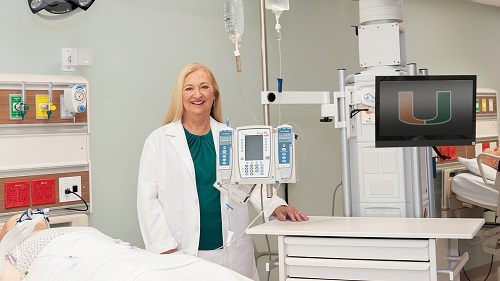By Cindy L. Munro, PhD, RN, ANP-BC, FAAN, FAANP, FAAAS
As the first months of 2022 begin to unfold, so does the opportunity for a new beginning. This year, let our New Year’s resolution be to establish and maintain health care environments that are as healthy for nurses as they are for their patients. We have the knowledge and tools necessary to accomplish this resolution.
Linked to pioneers like Florence Nightingale, nursing has long been considered the most trusted profession. We know that without high-quality, appropriately staffed nursing care health care systems are unsustainable. Without nurses, hospitals can’t save lives. Consequently, the well-being of nurses is central to provision of health care and to the viability of health care systems.
During the COVID-19 pandemic these past two years, frontline health care workers have faced well-documented struggles that have taken a deep, ongoing toll—mental, emotional, and physical. Nurses, such as those caring for patients with COVID-19, often provide a near-constant presence at the patient’s bedside for extended periods. Thankfully, there exists an evidence-based blueprint for improving nurse well-being that can guide us toward fulfilling our 2022 resolution.
The central elements of this blueprint are encompassed in the standards of a healthy work environment. Healthy work environments will attract and retain nurses. Compensation is just one of many factors that must be considered. In my recently coauthored editorial for the American Journal of Critical Care, I outlined the six standards for establishing and sustaining healthy work environments that have been articulated as essential by the American Association of Critical-Care Nurses (AACN). The six standards are: skilled communication, true collaboration, effective decision-making, appropriate staffing, meaningful recognition, and authentic leadership.
These standards, taken together, will enable nurses to control nursing practice, deliver excellent care, and be full partners in health care delivery. Healthy work environments maximize the contributions of nursing, improve nurse well-being, and have the potential to mitigate the stresses accompanying pandemic care. What is required is the will and the resources to create and maintain healthy work environments, and this commitment is even more urgent in our current crisis.
We have learned a great deal in the two years since we celebrated the first-ever International Year of the Nurse and Florence Nightingale’s 200th birthday in 2020. Despite health system staffing crises and many other challenges that have come to light amid this ongoing pandemic, there is still much to be optimistic about when it comes to the nursing profession. Among those reasons for optimism I count our school’s 563 nursing students and 550 public health and health science students, not to mention the more than 600 students we graduated in 2021.
New students are committing to the health professions in droves with their eyes wide open. Veteran nurses are finding new ways to make a difference through advanced degrees, advocacy, research, and leadership. They will propel nursing toward new horizons. To help realize their vast promise and potential, I and other nurse leaders must seize this moment to fully embrace the imperative of a healthy work environment, authentically live it, and engage others in its achievement. Restoring the well-being of nurses through improving the health care work environment will have broad benefits for patients, families, the health care team, health systems, and society. The need is urgent, and the time is now. We at the University of Miami School of Nursing and Health Studies are committed to this novel, optimistic, world-changing profession.
Cindy L. Munro is Dean and Professor, University of Miami School of Nursing and Health Studies.



























